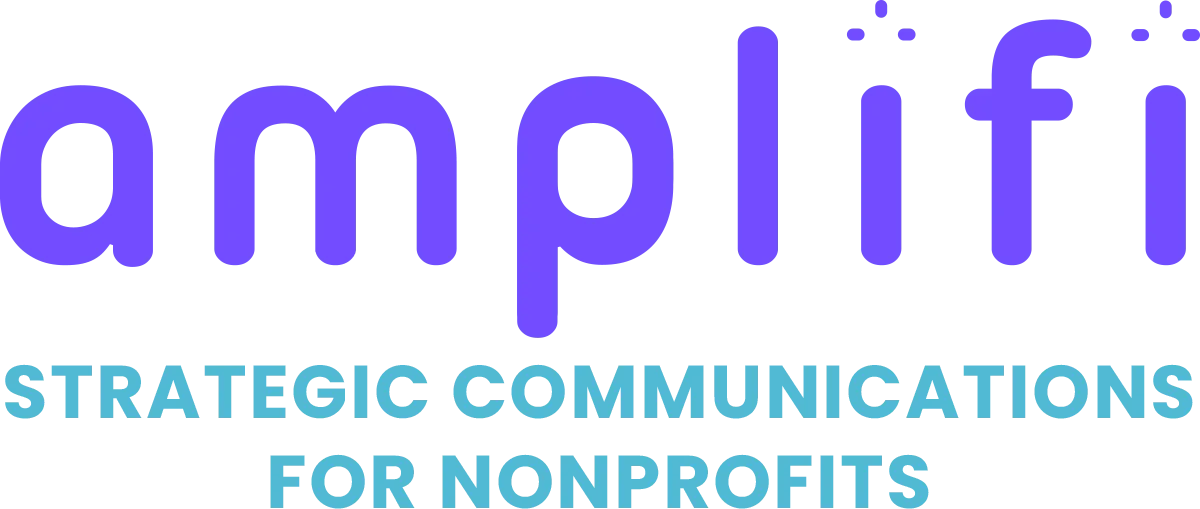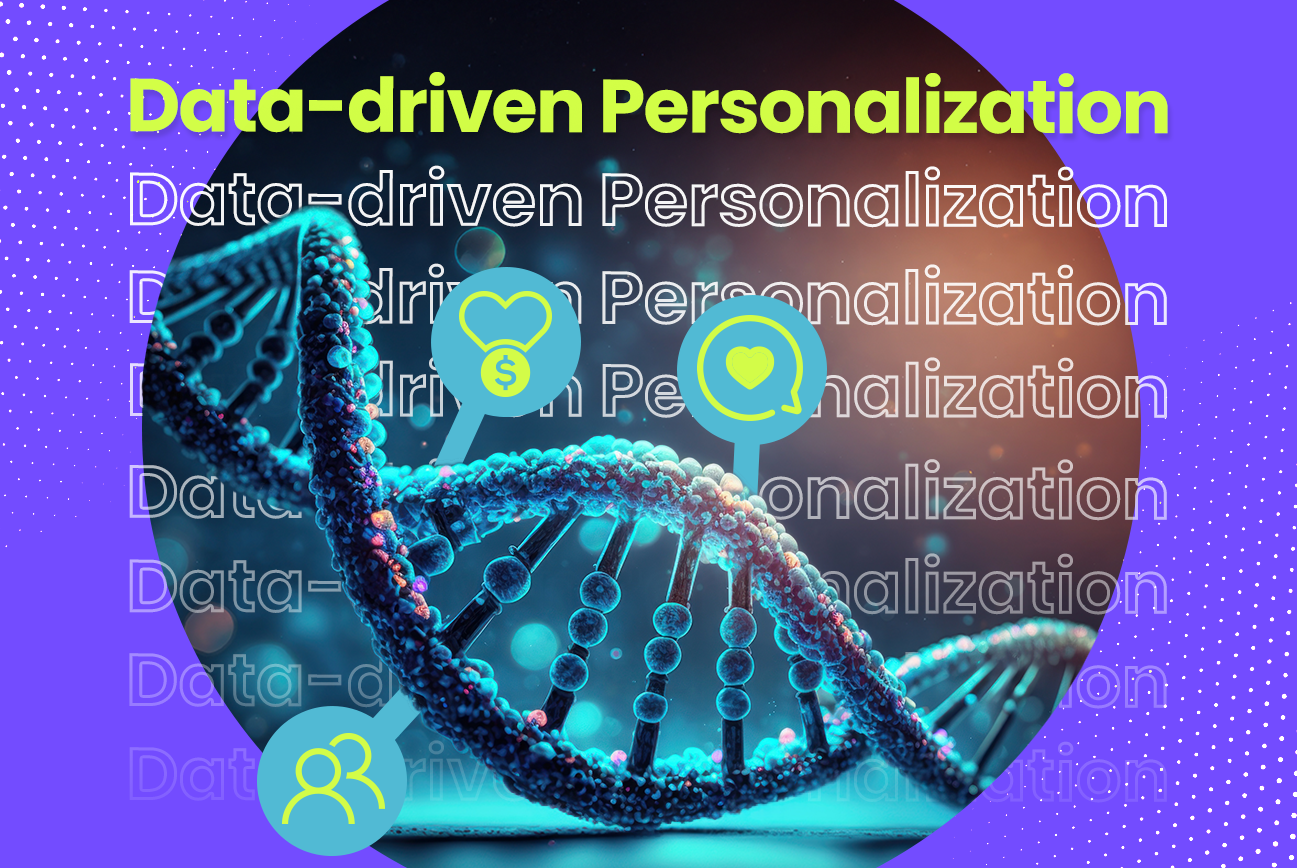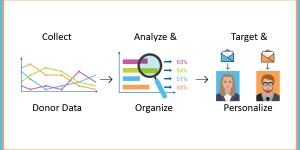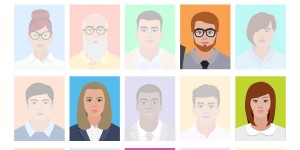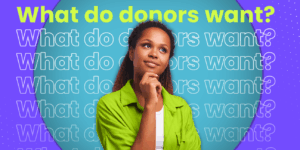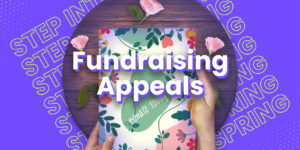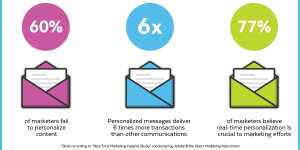You know donors are more willing to engage when they receive individualized communications that bring them closer to your mission, work, and organization. And it’s no secret that data-driven personalization strategies are still some of the most effective ways to connect with donors.
But the same old strategies we’ve used for years won’t cut it. Today’s audience is highly knowledgeable. They know it takes little effort to address you by name or mention your last gift amount.
Variable and versioned content.
Many fundraisers understand the difference between variable and versioned content by now. So, feel free to scroll to the next section if you want to skip the recap.
Variable content includes anything unique to the individual receiving the communication. This type of content is specially crafted for each recipient and can be switched out from piece to piece.
On the other hand, versioned content is less individualized but works towards the same goal of personalizing a message for the intended audience. This involves creating custom content for targeted groups based on shared attributes.
For example, independent schools typically send one version of their appeal to current parents and another to alumni.
LEARN MORE: Easy ways nonprofits use donor data to raise more.

Speaking to individuals.
Your donors will feel closer to your cause if you can engage them with messages that speak to them on a one-on-one level. Addressing a donor by name and mentioning their last gift date or amount is a start.
But these strategies are nothing new. You’ll need to be creative to make an impression.
Dig into your data and determine if there are any specific programs a donor has supported before. Then reference their last gift and share a bit about your progress and how the donor’s support made it possible.
This will take the personalized experience from your appeal letter or email and extend it to the donation page. Donors who land here will see the same variable content that was included in their appeal. And you can use past giving history to determine the ideal ask for each donor.
LEARN MORE: You can raise more with personalized landing pages.
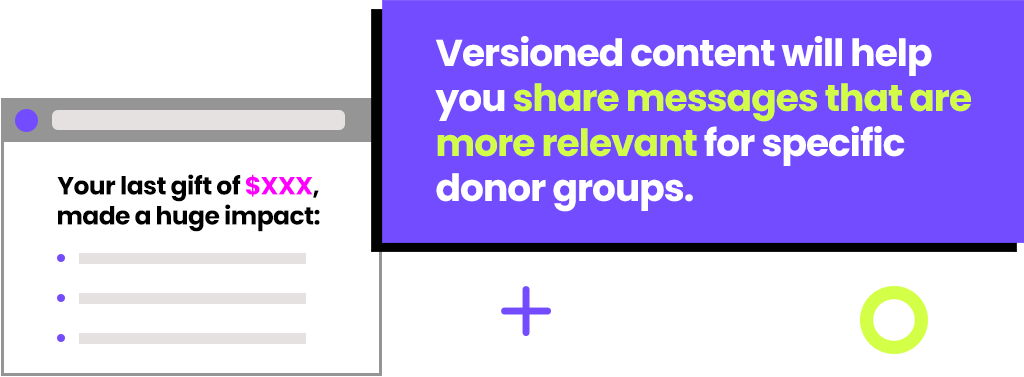
Connecting with donor groups.
Versioned content helps you apply the personal approach on a wider scale and speak with specific donor groups about what interests them most. Like variable content, you’ll be swapping out elements of your messages to speak more specifically with donors, but on a larger scale.
Think about the audience segments you already have, like monthly donors, volunteers, lapsed donors, and major donors. They can’t all hear the same message.
And versioned content is the key to opening doors to engagement with each group.
You can swap out a section of text that generally speaks to your audience with something more relevant for the donor and their journey.
For example, write a different version of the paragraph that encourages monthly giving candidates to sign up to make recurring donations. And replace it with a section that explains the benefits of planned giving to those prime candidates.
LEARN MORE: How to segment your nonprofit’s audience.
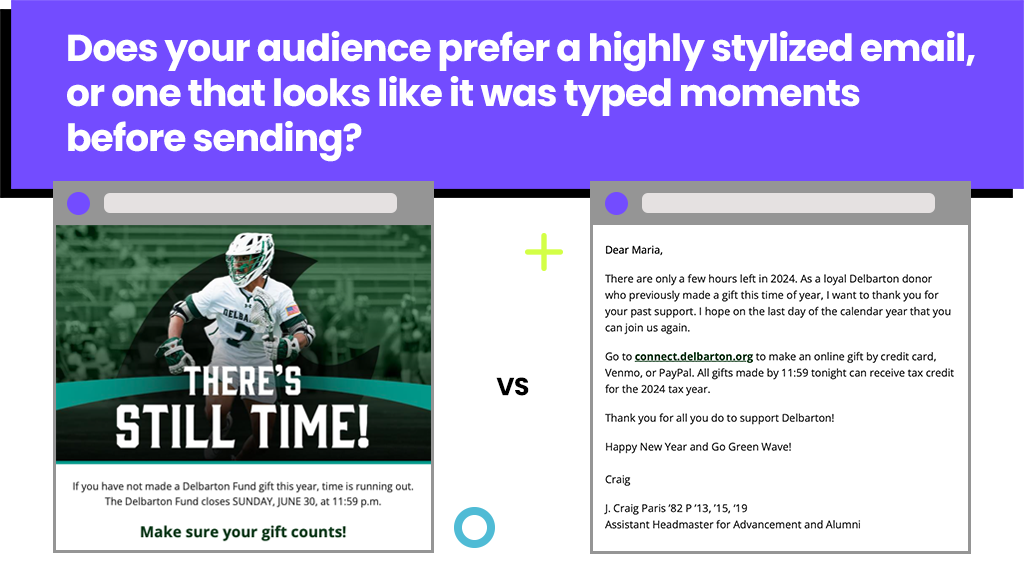
Data-driven design.
The way your appeal letters, emails, and other communications look can have a huge impact on how supporters absorb your message.
So, try sending two very different looking email appeals to half of your audience. Send 25 percent of your list version A and another 25 percent version B.
Then, analyze your results to determine which generated a stronger response, and send the winning version to the remaining 50 percent of your target audience. Try using different images, types, and sizes of paper or envelopes or a traditional appeal versus a stylized brochure to determine what works best.
This approach works best for emails since the results are more immediate than direct mail. So, you should send version A to half your audience and version B to the other half for print mailers. Then, you can analyze your results and use what you learn next time.
And don’t forget, the images you use are a key part of how supporters will digest your story. They can help you speak more personally about a donor’s relationship with your nonprofit.
For example, use a photo from your last event or volunteer outing for those who attended. Or use an A/B test to determine if your audience members are more motivated by happy or sad images and use what speaks more personally to them in the future.
LEARN MORE: How an A/B test keeps your fundraising on track.
Going further with donor personas.
Some of your donors probably have a lot in common with one another. And you can create donor personas and specific communication tracks for each if you’re ready to level up your personalization strategies.
Get started by creating a persona for first-time donors. Consider everything they have in common and use it to paint a picture of these donors, their motivations, and how they typically interact with your nonprofit.
Then, it’s up to you to keep someone engaged after they give for the first time. So, build a new donor welcome kit and follow-up communications that demonstrate your donors’ impact on your cause. And share some non-monetary ways in which they can extend their support.
Take the same approach and build personas for lapsed donors, volunteers who do not donate, planned giving prospects, repeat event attendees, or any other way that makes sense for your organization. Reach out with messages that reference their existing relationship with your nonprofit.
Want to talk about building donor personas for your nonprofit? Click here!
